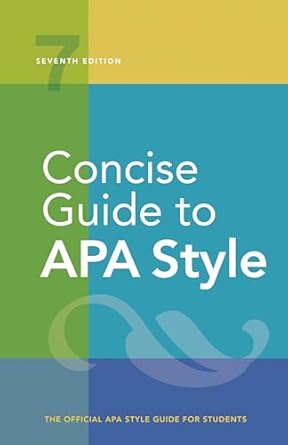[toc]
citation guide tv ted talks more
Concise Guide to APA Style: 7th Edition (OFFICIAL)
Page 302 Review
Decoding Citations: A Deep Dive into Academic Referencing
In the realm of academic writing, proper citation is paramount.
It’s not merely about giving credit where it’s due; it’s about upholding intellectual honesty, enabling readers to trace the origins of ideas, and building a robust foundation for scholarly discourse.
This analysis delves into specific citation examples, offering a detailed breakdown of their structure and purpose.
Citing TV Series Episodes and Webisodes
Navigating the citation of audiovisual content can be tricky.
Let’s examine the provided examples for TV series episodes:
“Barris, K. (Writer & Director). (2017, January 11).
Lemons (Season 3, Episode 12) [TV series episode].
In K.
Barris, J.
Groff, A.
Anderson, E.
B.
Dobbins, L.
Fishburne, & H.
Sugland (Executive Producers), Black-ish.
Wilmore Films; Artists First; Cinema Gypsy Productions; ABC Studios.”
Here’s what we can learn from this example:
- Author: Notice how the author isn’t a single person but includes the writer and director, with their roles clearly specified in parentheses.
This is crucial when the creative input of these individuals is significant.
- Date: The exact date of airing is provided, offering precision.
- Title: The episode title, “Lemons,” is followed by the series details: Season 3, Episode 12.
- Series Information: The title of the TV series, “Black-ish,” is italicized.
The Executive Producers are listed, followed by the production companies involved.
The second example reinforces these principles:
“Oakley, B. (Writer), Weinstein, J. (Writer), & Lynch, J. (Director). (1995, May 21).
Who shot Mr.
Burns? (Part one) (Season 6, Episode 25) [TV series episode].
In D.
Mirkin, J.
L.
Brooks, M.
Groening, & S.
Simon (Executive Producers), The Simpsons.
Gracie Films; Twentieth Century Fox Film Corporation.”
The parenthetical citations for these examples are concise: “(Barris, 2017; Oakley et al., 1995)” and the narrative citations are: “Barris (2017) and Oakley et al. (1995)”.
This format allows for easy referencing within the text.
Key Considerations for TV Episode Citations
The ebook highlights several important considerations:
- Roles: “Include writer(s) and the director for the episode.
Include the contributor roles in parentheses after each contributor’s name. ‘Writer’ and ‘Director’ are shown here, but ‘Executive Director’ or other role descriptions might also be used.” This emphasizes the importance of acknowledging specific contributions.
- Episode Details: “Provide the season number and episode number after the title in parentheses.” This ensures readers can easily locate the specific episode being referenced.
Citing TED Talks
TED Talks, readily available online, present another common citation scenario:
“Giertz, S. (2018, April).
Why you should make useless things [Video].
TED Conferences. https://www.ted.com/talks/simone_giertz_why_you_should_make_useless_things”
“TED. (2012, March 16).
Brené Brown: Listening to shame [Video].
YouTube. https://www.youtube.com/watch?v=psN1DORYYVO”
The parenthetical citations for these examples are: “(Giertz, 2018; TED, 2012)” and narrative citations: “Giertz (2018) and TED (2012)”.
Distinguishing TED Talk Sources
The ebook clarifies how to handle TED Talks from different platforms:
- TED Website: “When the TED Talk comes from TED’s website (as with the Giertz example), use the name of the speaker as the author.”
- YouTube: “When the TED Talk is on YouTube, list the owner of the YouTube account (here, TED) as the author to aid in retrieval.” This is crucial because the uploader (TED) may not always be the speaker.
Integrating Speaker Names in Narrative Citations
The ebook provides guidance on seamlessly incorporating speaker names into the narrative: “When the speaker is not listed as the author, integrate their name into the narrative if desired: ‘Brown discussed shame as a human experience (TED, 2012).’” This creates a more natural and engaging flow for the reader.
Series Spanning Multiple Years
The document mentions citing series spanning multiple years:
“Parenthetical citation: (Simon et al., 2002-2008)”
“Narrative citation: Simon et al. (2002-2008)”
“When the series spans multiple years, separate the years with an en dash.
If the series is still airing, replace the second year with the word ‘present’: (2015-present).”
Conclusion
Accurate and consistent citation is the cornerstone of academic integrity.
By understanding the nuances of citing various sources, from TV episodes to TED Talks, writers can ensure their work is both credible and easily verifiable.
Paying close attention to detail, as demonstrated in these examples, is essential for maintaining scholarly standards.
Buy full ebook for only $18: https://www.lulu.com/shop/american-psychological-association/concise-guide-to-apa-style-7th-edition-official/ebook/product-rmzpq54.html?page=1&pageSize=4
Citation Guide Tv Ted Talks More
Read more: Mastering Quotations: APA Style Guide for Students

